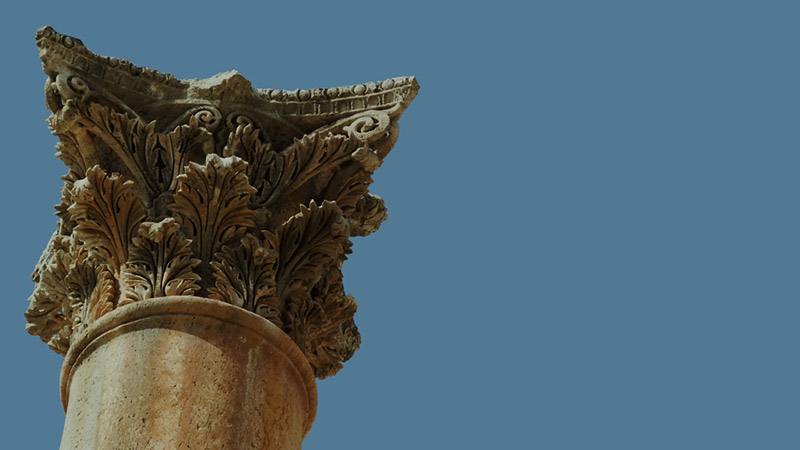More Results
Showing 12 of 535
Encyclopedia

The Altar at Megiddo
After reaching the Promised Land, the Israelites were commanded by God to destroy the Canaanite high places (Num. 33:52) so that they would not be tempted to blend worship of the false gods of the land with the worship of Yahweh, the one true God....
MORE
The Burnt House
The ruins of this house on Jerusalem's Western Hill were uncovered in the 1970's. This home belonged to the Kathros family, who were known from Jewish history and lived here at the time of Jesus. The Kathros were one of many priestly families (Sad...
MORE
The Cult of Asclepius
Asclepius, the god who healed with moving water, was said to be the son of god Apollo and a woman named Coronis. His symbol was the snake, and he was known as the god of life because the snake seemingly resurrects itself (sheds its skin and is bor...
MORE
The Harbor
These ruins are of harbors built after the time of Herod. His harbor, which was built on concrete foundations in the sea, is no longer visible, although the base of the breakwater still exists beneath the water. This spectacular accomplishment bro...
MORE
The High Place and Altar at Dan
The high place at Dan, in northern Israel, dates to 920 BC, when Israel was divided into the northern (Israel) and the southern (Judah) kingdoms.The high place measured 62 feet square and was surrounded by a wall. On top of the high place were bui...
MORE
The History of Jerusalem
2,000 BC- God sends Abraham to the area of Mount Moriah to sacrifice Isaac.1,000 BC- David captures Jerusalem, names it the City of David, and makes it his capital.950 BC- Solomon spends seven years building the temple, then spends thirty years bu...
MORE
The Holy of Holies of the Temple at Arad
The Holy of Holies was reached by climbing two steps. This provided the symbolism of going up to God that is so central to the biblical idea of worship.In this small room were two standing stones. Scholars debate whether these stones represented t...
MORE
The Holy Place of the Temple at Arad
This room was the priests' court, which contained several key elements of the worship of Yahweh.Unseen just inside the opening is a stone bench, and across from the bench are the two incense altars at the entrance to the Holy of Holies. The bench ...
MOREGlossary

Temple Mount
The ridge on which Jerusalem's Temple was built and/or the platform on which the Temple and its courts stood. King Herod's platform was supported by massive walls, the tallest standing 160 feet, and measured more than 1,500 feet long, north to sou...
MORE
Temple Mount Definition
' The ridge on which Jerusalem's Temple was built and/or the platform on which the Temple and its courts stood. King Herod's platform was supported by massive walls, the tallest standing 160 feet, and measured more than 1,500 feet long, north to ...
MORE
Tetrarch Definition
A Roman political office; meant one-fourth of a kingdom. When Herod died, his three sons and others received parts of his kingdom; two sons become tetrarchs, one an ethnarch.
MORE


















